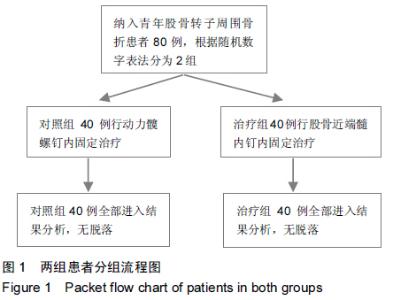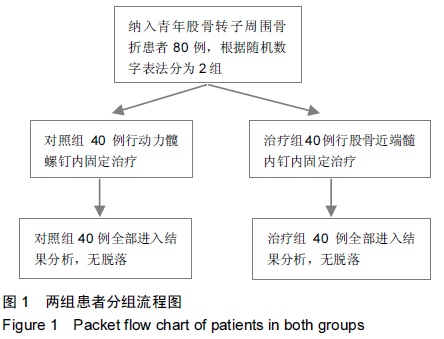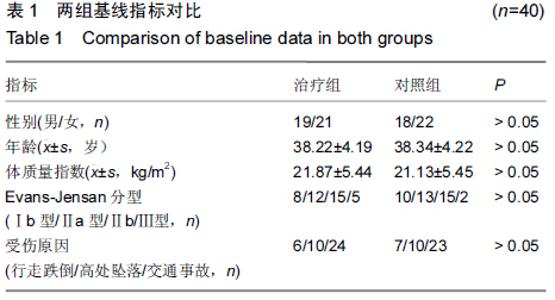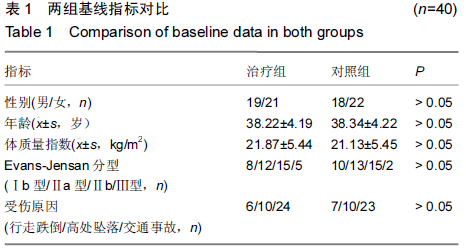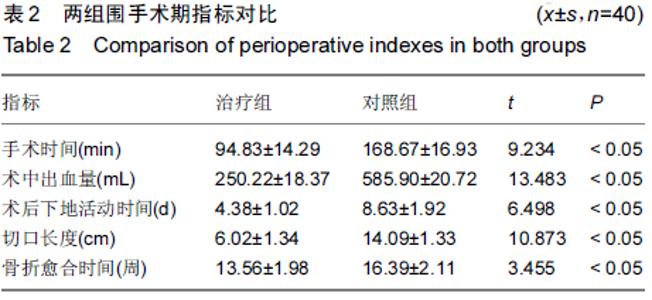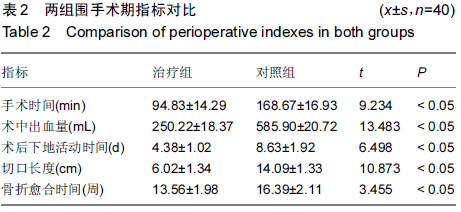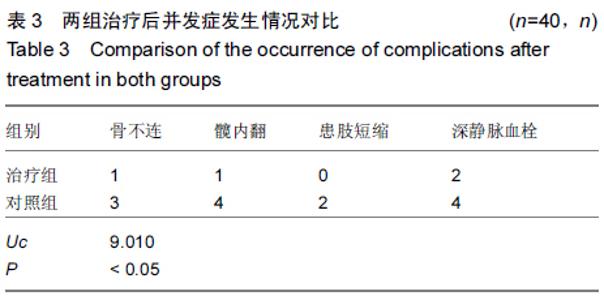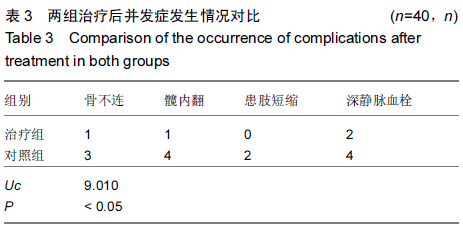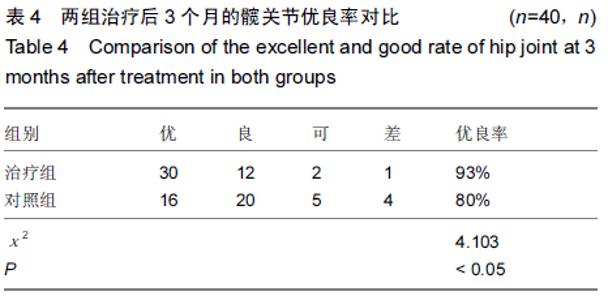Chinese Journal of Tissue Engineering Research ›› 2015, Vol. 19 ›› Issue (44): 7137-7141.doi: 10.3969/j.issn.2095-4344.2015.44.016
Previous Articles Next Articles
Proximal femoral intramedullary nail fixation for treating intertrochanteric fractures in young patients: joint function and complications in 3-month follow-up
Yang Li-ming1, Xie Zhi-yue1, Xiong Min2
- 1Department of Orthopedics, Chengdu First People’s Hospital, Chengdu 610000, Sichuan Province, China; 2Hubei University of Medicine, Shiyan 442000, Hubei Province, China
-
Received:2015-09-02Online:2015-10-22Published:2015-10-22 -
Contact:Xie Zhi-yue, Associate chief physician, Department of Orthopedics, Chengdu First People’s Hospital, Chengdu 610000, Sichuan Province, China -
About author:Yang Li-ming, Attending physician, Department of Orthopedics, Chengdu First People’s Hospital, Chengdu 610000, Sichuan Province, China -
Supported by:the Project of Hubei Province Education Department, No. B20112115
Cite this article
Yang Li-ming, Xie Zhi-yue, Xiong Min. Proximal femoral intramedullary nail fixation for treating intertrochanteric fractures in young patients: joint function and complications in 3-month follow-up[J]. Chinese Journal of Tissue Engineering Research, 2015, 19(44): 7137-7141.
share this article
| [1] Ruecker AH,Ruppercht M,Gruber M,et al. The treatment of intertrochanteric fractures:results using an intramedullary nail with intergrated cephalocervical screws and linear compression. J Orthop Trauma. 2009;23(8):22-30. [2] 王东,王起奎,周君琳.股骨近端防旋髓内钉与InterTan髓内钉治疗股骨转子间骨折疗效比较的Meta分析[J].中华创伤骨科杂志, 2014,16(8):668-673.
[3] van Embden D, Stollenwerck GA, Koster LA, et al. The stability of fixation of proximal femoral fractures: a radiostereometric analysis. Bone Joint J. 2015;97(3):391-397.
[4] 任军,曾兆辉,佘军,等.微创锁定钢板技术在股骨转子周围骨折治疗中的应用[J].中国乡村医药,2011,18(10):17-18.
[5] 高建生,汤骏.PFNA治疗成人股骨转子周围骨折的疗效分析[J].浙江创伤外科,2010,15(4):463-464.
[6] 李青忠,姚志宏,王君,等.闭合手法复位小切口PFNA治疗老年股骨粗隆间骨折临床分析[J].浙江创伤外科,2014,4(11): 584-585.
[7] Konstantinidis L, Grünewald H, Hauschild O, et al. Sliding of the load carrier in third-generation intramedullary nails for proximal femur fractures: An in vitro mechanical comparison study. Proc Inst Mech Eng H. 2015;229(2):110-114.
[8] 李成付,陈晓艺,边瑜健.PFNA治疗不稳定股骨转子间骨折的临床疗效比较[J].中国现代医生,2014,52(10):135-136.
[9] 冯金海.三种方法治疗股骨粗隆间骨折疗效比较[J].中国实用医刊,2014,41(10):73-75.
[10] 吴国林,陈红卫,张根福,等.PFNA内固定治疗老年股骨转子间骨折38例疗效分析[J].浙江医学,2014,4(12):325-327.
[11] 邓军荣.锁定接骨板治疗股骨转子间骨折42例临床分析[J].临床外科杂志,2011,19(10):728.
[12] 易先宏,潘骏,翁益民,等.加长型股骨近端髓内钉治疗青年股骨转子下骨折[J].中医正骨,2010,22(6):38-39.
[13] Hoshi M, Oebisu N, Takada J, et al. Case report demonstrating effectiveness of sorafenib in multiple lung and bone metastases of renal cell carcinoma. Oncol Lett. 2015; 9(3):1409-1411.
[14] 王小洪.股骨近端髓内钉在股骨转子周围骨折中的应用[J].中医学报,2014,29(1):34-35.
[15] 张敬东,项良碧,祖启明,等.人工股骨头置换治疗高龄股骨转子间不稳定型骨折[J].中国组织工程研究,2012,35(7):6514-6518.
[16] 荣忠美,杨明,荣建辉.股骨近端髓内钉(PFN)治疗股骨转子周围骨折[J].江西医药,2012,47(12):1071-1072.
[17] Choy WS, Kim KJ, Lee SK, et al. Surgical treatment of pathological fractures occurring at the proximal femur. Yonsei Med J. 2015;56(2):460-465.
[18] Wei J, Qin DA, Guo XS. [Curative effect analysis on proximal frmoral nail antirotation for the treatment of femoral intertrochanteric fracture and integrity of lateral trochanteric wall].Zhongguo Gu Shang. 2015;28(6):572-575.
[19] Lin YB, Li RB, Xiong GS, et al. Treatment of Middle-up Part Long-segment Femoral Fracture with Long Proximal Femoral Nail Antirotation.Orthop Surg. 2015;7(2):138-145.
[20] Nicolaou D, Watson JT. Nailing proximal femur fractures: how to choose starting point and proximal screw configuration. J Orthop Trauma. 2015;29 Suppl 4:S22-27.
[21] Shi Y, Li F, Tan W, et al. [Effectiveness comparison of proximal femoral nail anti-rotation and locking compression plate for intertrochanteric fractures with lateral unsubstantial femoral wall in elderly patients]. Zhongguo Xiu Fu Chong Jian Wai Ke Za Zhi. 2014;28(10):1199-1203.
[22] Guerra MT, Pasqualin S, Souza MP, et al. Functional recovery of elderly patients with surgically-treated intertrochanteric fractures: preliminary results of a randomised trial comparing the dynamic hip screw and proximal femoral nail techniques. Injury. 2014;45 Suppl 5:S26-31.
[23] Ma KL, Wang X, Luan FJ, et al. Proximal femoral nails antirotation, Gamma nails, and dynamic hip screws for fixation of intertrochanteric fractures of femur: A meta-analysis. Orthop Traumatol Surg Res. 2014;100(8):859-866.
[24] Chen Y, Liu S, Lin P, et al. Comparative biomechanical study of reversed less invasive stabilization system and proximal femoral nail antirotation for unstable intertrochanteric fractures. Chin Med J (Engl). 2014;127(23):4124-4129.
[25] Turgut A, Kalenderer Ö, Günayd?n B, et al. Fixation of intertrochanteric femur fractures using Proximal Femoral Nail Antirotation (PFNA) in the lateral decubitus position without a traction table. Acta Orthop Traumatol Turc. 2014;48(5): 513-520.
[26] Li M, Wu L, Liu Y, et al. Clinical evaluation of the Asian proximal femur intramedullary nail antirotation system (PFNA-II) for treatment of intertrochanteric fractures. J Orthop Surg Res. 2014;9:112.
[27] Zhang K, Zhang S, Yang J, et al. Proximal femoral nail vs. dynamic hip screw in treatment of intertrochanteric fractures: a meta-analysis. Med Sci Monit. 2014;20:1628-1633.
|
| [1] | Zhang Tongtong, Wang Zhonghua, Wen Jie, Song Yuxin, Liu Lin. Application of three-dimensional printing model in surgical resection and reconstruction of cervical tumor [J]. Chinese Journal of Tissue Engineering Research, 2021, 25(9): 1335-1339. |
| [2] | Zeng Yanhua, Hao Yanlei. In vitro culture and purification of Schwann cells: a systematic review [J]. Chinese Journal of Tissue Engineering Research, 2021, 25(7): 1135-1141. |
| [3] | Xu Dongzi, Zhang Ting, Ouyang Zhaolian. The global competitive situation of cardiac tissue engineering based on patent analysis [J]. Chinese Journal of Tissue Engineering Research, 2021, 25(5): 807-812. |
| [4] | Wu Zijian, Hu Zhaoduan, Xie Youqiong, Wang Feng, Li Jia, Li Bocun, Cai Guowei, Peng Rui. Three-dimensional printing technology and bone tissue engineering research: literature metrology and visual analysis of research hotspots [J]. Chinese Journal of Tissue Engineering Research, 2021, 25(4): 564-569. |
| [5] | Chang Wenliao, Zhao Jie, Sun Xiaoliang, Wang Kun, Wu Guofeng, Zhou Jian, Li Shuxiang, Sun Han. Material selection, theoretical design and biomimetic function of artificial periosteum [J]. Chinese Journal of Tissue Engineering Research, 2021, 25(4): 600-606. |
| [6] | Liu Fei, Cui Yutao, Liu He. Advantages and problems of local antibiotic delivery system in the treatment of osteomyelitis [J]. Chinese Journal of Tissue Engineering Research, 2021, 25(4): 614-620. |
| [7] | Li Xiaozhuang, Duan Hao, Wang Weizhou, Tang Zhihong, Wang Yanghao, He Fei. Application of bone tissue engineering materials in the treatment of bone defect diseases in vivo [J]. Chinese Journal of Tissue Engineering Research, 2021, 25(4): 626-631. |
| [8] | Zhang Zhenkun, Li Zhe, Li Ya, Wang Yingying, Wang Yaping, Zhou Xinkui, Ma Shanshan, Guan Fangxia. Application of alginate based hydrogels/dressings in wound healing: sustained, dynamic and sequential release [J]. Chinese Journal of Tissue Engineering Research, 2021, 25(4): 638-643. |
| [9] | Chen Jiana, Qiu Yanling, Nie Minhai, Liu Xuqian. Tissue engineering scaffolds in repairing oral and maxillofacial soft tissue defects [J]. Chinese Journal of Tissue Engineering Research, 2021, 25(4): 644-650. |
| [10] | Xing Hao, Zhang Yonghong, Wang Dong. Advantages and disadvantages of repairing large-segment bone defect [J]. Chinese Journal of Tissue Engineering Research, 2021, 25(3): 426-430. |
| [11] | Chen Siqi, Xian Debin, Xu Rongsheng, Qin Zhongjie, Zhang Lei, Xia Delin. Effects of bone marrow mesenchymal stem cells and human umbilical vein endothelial cells combined with hydroxyapatite-tricalcium phosphate scaffolds on early angiogenesis in skull defect repair in rats [J]. Chinese Journal of Tissue Engineering Research, 2021, 25(22): 3458-3465. |
| [12] | Wang Hao, Chen Mingxue, Li Junkang, Luo Xujiang, Peng Liqing, Li Huo, Huang Bo, Tian Guangzhao, Liu Shuyun, Sui Xiang, Huang Jingxiang, Guo Quanyi, Lu Xiaobo. Decellularized porcine skin matrix for tissue-engineered meniscus scaffold [J]. Chinese Journal of Tissue Engineering Research, 2021, 25(22): 3473-3478. |
| [13] | Mo Jianling, He Shaoru, Feng Bowen, Jian Minqiao, Zhang Xiaohui, Liu Caisheng, Liang Yijing, Liu Yumei, Chen Liang, Zhou Haiyu, Liu Yanhui. Forming prevascularized cell sheets and the expression of angiogenesis-related factors [J]. Chinese Journal of Tissue Engineering Research, 2021, 25(22): 3479-3486. |
| [14] | Liu Chang, Li Datong, Liu Yuan, Kong Lingbo, Guo Rui, Yang Lixue, Hao Dingjun, He Baorong. Poor efficacy after vertebral augmentation surgery of acute symptomatic thoracolumbar osteoporotic compression fracture: relationship with bone cement, bone mineral density, and adjacent fractures [J]. Chinese Journal of Tissue Engineering Research, 2021, 25(22): 3510-3516. |
| [15] | Liu Liyong, Zhou Lei. Research and development status and development trend of hydrogel in tissue engineering based on patent information [J]. Chinese Journal of Tissue Engineering Research, 2021, 25(22): 3527-3533. |
| Viewed | ||||||
|
Full text |
|
|||||
|
Abstract |
|
|||||
